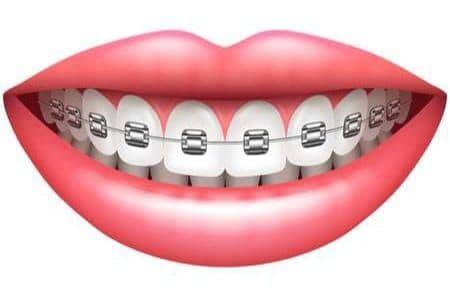
14 Oct 2025
Magadh Oro Dental Clinic is known as one of the best dental clinics in Patna, offering comprehensive orthodontic treatments, including metal braces, ceramic braces, lingual braces, and Invisalign clear aligners. If you're undergoing braces treatment, maintaining proper oral hygiene is essential to achieving the perfect smile.
Straight teeth not only improve your smile but also make cleaning easier, preventing bacterial buildup and gum issues. However, metal brackets and wires can create temporary challenges in maintaining dental hygiene. With the right care, you can ensure faster, safer, and more effective treatment.
To prevent broken brackets and bent wires:
Durable and cost-effective, but require diligent cleaning to avoid plaque buildup.
Less visible but prone to staining. Avoid foods like curry, coffee, red wine, and berries.
Hidden behind teeth but harder to clean, so frequent flossing and irrigators are recommended.
Removable and transparent. Only drink water while wearing aligners. Brush before reinserting them after meals.
The cost of braces in Patna varies depending on the type of treatment and dental complexity. At Magadh Oro Dental, we provide affordable and customized plans:
Take the first step toward a confident, beautiful smile. Whether you're looking for metal braces, Invisalign, or ceramic braces, our expert orthodontists will guide you through the best treatment plan.
📞 Call us today to book your consultation at Magadh Oro Dental, Patna and get a free smile assessment.
At Magadh Oro Dental, metal braces are the most affordable orthodontic option in Patna, costing between ₹25,000 to ₹40,000, depending on the complexity of the case.
The length of braces treatment is different for each patient because each patient has a unique problem. The average length of treatment for non ectraction cases is about 9 months and for extraction cases 12 months or more, but it can vary based on teeth alignment, bite correction needs, and patient compliance.
Metal braces may cause slight discomfort or soreness for the first few days after placement or adjustment, but this is temporary and can be managed with over-the-counter pain relievers. Once patients become accustomed to their braces, they may even forget they have them on.
Yes, but you should avoid sticky, hard, and crunchy foods like popcorn, chewing gum, and hard candies as they can damage brackets or wires. Stick to soft foods like yogurt, rice, and cooked vegetables.
Metal braces are more durable and cost-effective, making them ideal for complex orthodontic cases. However, if aesthetics are your priority, ceramic braces or Invisalign might be better options.
If a bracket or wire comes loose, let your orthodontist know right away. Broken braces cannot deliver the right forces to move your teeth, and that could prolong treatment. Your orthodontist is the best person to call for advice about next steps.
Fluoride toothpaste is recommended, preferably without any whitening.
The cost of braces for teeth in Patna varies depending on several factors. On average, the price range for braces in Patna can vary from ₹40,000 to ₹1,50,000 or more, depending on the type of braces you choose, the severity of your dental condition, and the clinic's reputation. Here’s a breakdown of different types of braces and their estimated costs at Magadh Oro Dental:
Copyright © 2025 Magadh oro Dental. All rights reserved.
No Comments found
Our Clinics
Looking for expert dental care in Patna, Bihar? We have two conveniently located branches to serve you better. Whether you need routine check-ups, cosmetic treatments, or emergency dental care, find the clinic nearest to you and get the best dental solutions.
Patient Reviews
We take pride in delivering exceptional dental care with a focus on comfort and quality. See what our valued patients have to say about their experiences at our Dental Clinic.